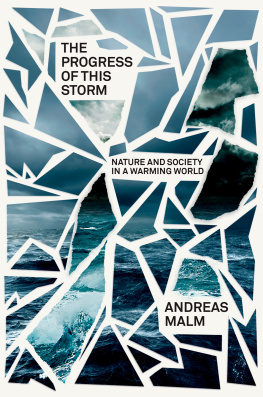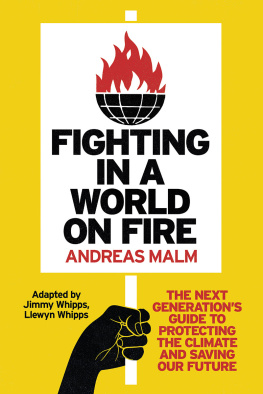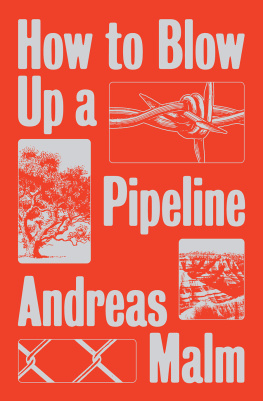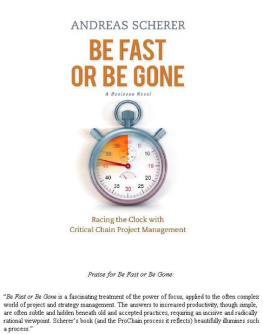Andreas Malm - The Progress of This Storm
Here you can read online Andreas Malm - The Progress of This Storm full text of the book (entire story) in english for free. Download pdf and epub, get meaning, cover and reviews about this ebook. year: 2018, publisher: Verso Books, genre: Science. Description of the work, (preface) as well as reviews are available. Best literature library LitArk.com created for fans of good reading and offers a wide selection of genres:
Romance novel
Science fiction
Adventure
Detective
Science
History
Home and family
Prose
Art
Politics
Computer
Non-fiction
Religion
Business
Children
Humor
Choose a favorite category and find really read worthwhile books. Enjoy immersion in the world of imagination, feel the emotions of the characters or learn something new for yourself, make an fascinating discovery.
- Book:The Progress of This Storm
- Author:
- Publisher:Verso Books
- Genre:
- Year:2018
- Rating:3 / 5
- Favourites:Add to favourites
- Your mark:
- 60
- 1
- 2
- 3
- 4
- 5
The Progress of This Storm: summary, description and annotation
We offer to read an annotation, description, summary or preface (depends on what the author of the book "The Progress of This Storm" wrote himself). If you haven't found the necessary information about the book — write in the comments, we will try to find it.
The Progress of This Storm — read online for free the complete book (whole text) full work
Below is the text of the book, divided by pages. System saving the place of the last page read, allows you to conveniently read the book "The Progress of This Storm" online for free, without having to search again every time where you left off. Put a bookmark, and you can go to the page where you finished reading at any time.
Font size:
Interval:
Bookmark:


Andreas Malm

First published by Verso 2018
Andreas Malm 2018
The illustration titled View of a Coal Seam on the Island of Labuan, drawn by L. C.
Heath, appeared in James Augustus St John, Views in the Eastern Archipelago: Borneo,
Sarawak, Labuan (London: Thos. Maclean, 1847)
All rights reserved
The moral rights of the author have been asserted
1 3 5 7 9 10 8 6 4 2
Verso
UK: 6 Meard Street, London W1F 0EG
US: 20 Jay Street, Suite 1010, Brooklyn, NY 11201
versobooks.com
Verso is the imprint of New Left Books
ISBN-13: 978-1-78663-415-3
ISBN-13: 978-1-78663-416-0 (US EBK)
ISBN-13: 978-1-78663-414-6 (UK EBK)
British Library Cataloguing in Publication Data
A catalogue record for this book is available from the British Library
Library of Congress Cataloging-in-Publication Data
Names: Malm, Andreas, 1977 author.
Title: The progress of this storm : on society and nature in a warming world / Andreas Malm.
Description: London ; New York : Verso, 2018. |
Identifiers: LCCN 2017036839 (print) | LCCN 2017045085 (ebook) | ISBN 9781786634160 (US e-book) | ISBN 9781786634153 (hardback)
Subjects: LCSH: Human ecology. | Global warming Social aspects. | Climatic changes Social aspects. | Nature. | Capitalism Environmental aspects. | BISAC: POLITICAL SCIENCE / History & Theory. | PHILOSOPHY / Political. | NATURE / Environmental Conservation & Protection.
Classification: LCC GF50 (ebook) | LCC GF50 .M345 2018 (print) | DDC 304.2/5 dc23
LC record available at https://lccn.loc.gov/2017036839
Typeset in Adobe Garamond by Biblichor Ltd, Edinburgh
Printed in the UK by CPI Mackays
The two heads had already fused to one
and features from each flowed and blended into
one face where two were lost in one another
Each former likeness now was blotted out;
both, and neither one it seemed this picture
of deformity.
Dante, in the eighth circle of hell
Nature does not produce on the one hand owners of money or commodities, and on the other hand men possessing nothing but their own labour-power. This relation has no basis in natural history, nor does it have a social basis common to all periods of human history. It is clearly the result of a past historical development, the product of many economic revolutions, of the extinction of a whole series of older formations of social production.
Karl Marx, Capital, Volume 1
The skys changing.
A roaring storm is coming.
A howling mist,
a growling downpour.
All the money men who close their eyes
and pretend
that this rumble
must be low planes.
Kate Tempest, Let Them Eat Chaos
Theory for the Warming Condition
NEVER IN THE HEAT OF THE MOMENT
Is there any time left in this world? In an essay published in New Left Review in 2015, Fredric Jameson restated his thirty-year-old diagnosis of postmodernity as the predominance of space over time.more than anything else, marks the onset of postmodernity: and here we are, still.
The diagnosis hinges on the eradication of nature. Jamesons argument runs something like this: in the modern era, vast fields of old nature remained spread out between the bustling new centres of factory and market. A short drive would take the modernist back to the rural village where she was born; ancient ways of life dotted every horizon, the modern mode speeding up within a landscape tied to the natural and immemorial. It was this contrast that made the modernists feel the movement of time from the old to the new, towards the future that so fundamentally structured their culture. Now the foil is gone. Peasants, lords, artisans, costermongers have vanished from sight and, along with them, nature has been triumphantly blotted out.
But towards this city a storm is on the move.
Lerners New York, however, is under siege. The novel begins with the approach of an unusually large cyclonic system and ends with the cataclysmic landfall of another. Houses up and down the coast had been obliterated, flooded, soon a neighborhood in Queens would burn. Emergency workers were fishing out the bodies of those who had drowned during the surge; who knew how many of the homeless had perished? A point of irrefutable reality pierces the narrative. It submerges the protagonist in a flow of very palpable time: he looks back on six years of these walks on a warming planet. When Union Square turns heavy with water in its gas phase, a tropical humidity that wasnt native to New York, an ominous medium, ordinary time is shut down, the air like defeated time itself falling from the sky. The protagonist sinks into obsession with temporality, as he ruminates over what he believes to be the source of all these storms: climate change.
Recent efforts in event attribution corroborate the belief. Every particular storm is the unique outcome of a chaotic mix of weather components, but global warming alters the baseline where these are Such man-made weather, however, is never made in the present.
Global warming is a result of actions in the past. Every molecule of CO2 above the pre-industrial level resides in the atmosphere because humans have burnt trees and other plants and, preponderantly, fossil fuels over the course of time. In the beginning, the carbon in coal, oil and natural gas was locked into the crust of the earth; then at some point, those reserves were located and exploited and the fuels delivered to fireplaces, whence the carbon was released as CO2. At any given moment, the excess of heat in the earth system is the sum of all those historical fires, of the cumulative emissions, the pulses of CO2 stacked on top of each other: the storm of climate change draws its force from countless acts of combustion over, to be exact, the past two centuries. We can never be in the heat of the moment, only in the heat of this ongoing past. Insofar as extreme weather is shaped by basal warming, it is the legacy of what people have done, the latest leakage from a malign capsule indeed, the air is heavy with time.
When Walter Benjamin roamed the cities of interwar Europe, he jotted down a signpost for further investigation: On the double meaning of the term temps in French: temps as in weather and time. This time, however, the weather presents anything but a reliable clock. It tends to upset schedules and routines by dint of the weight it carries from the past. The tempest has a twisted, multiplex temporality, as registered by Lerners protagonist, who compulsively reports days of unseasonable warmth when walking down October streets:
The unusual heat felt summery, but the light was distinctly autumnal, and the confusion of seasons was reflected in the clothing around them: some people were dressed in T-shirts and shorts, while others wore winter coats. It reminded him of a double exposed photograph or a matting effect in film: two temporalities collapsed into a single image.
Even more apposite might be his sensation of having travelled back in time, or of distinct times being overlaid, temporalities interleaved, for every impact of climate change is, by physical definition, a communication with a human past.
Font size:
Interval:
Bookmark:
Similar books «The Progress of This Storm»
Look at similar books to The Progress of This Storm. We have selected literature similar in name and meaning in the hope of providing readers with more options to find new, interesting, not yet read works.
Discussion, reviews of the book The Progress of This Storm and just readers' own opinions. Leave your comments, write what you think about the work, its meaning or the main characters. Specify what exactly you liked and what you didn't like, and why you think so.











